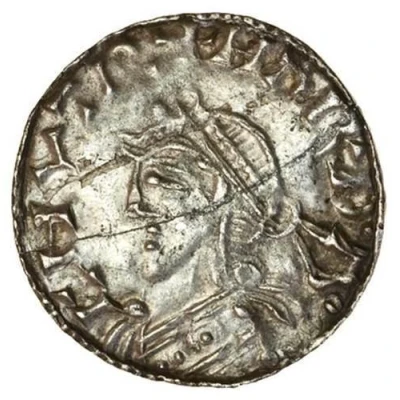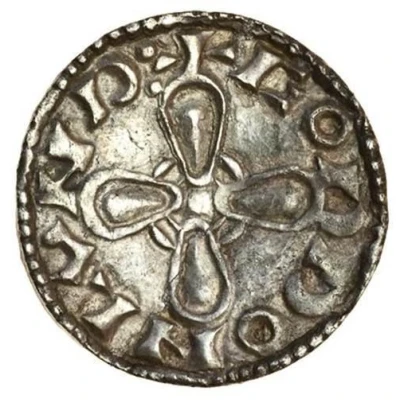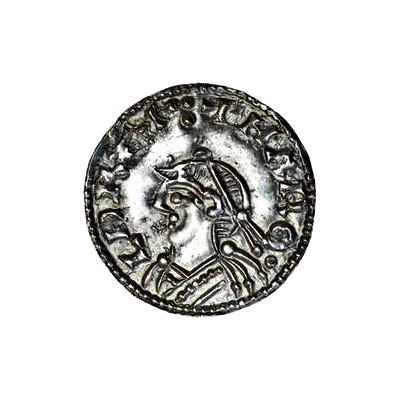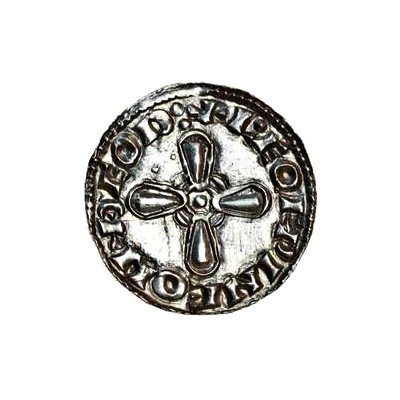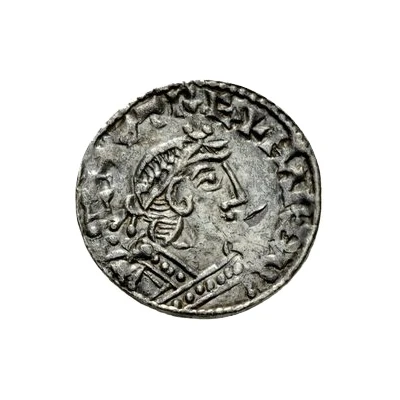
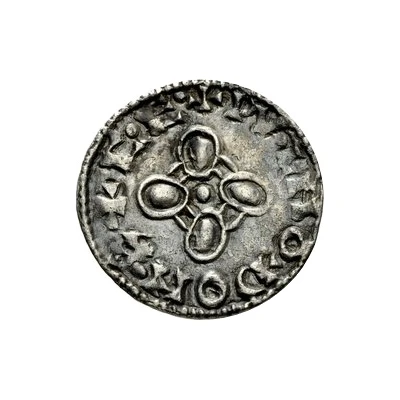

© Classical Numismatic Group, Inc.
Penny - Harthacnut Jewel Cross type; Regency period ND
| Silver | 1.08 g | 17 mm |
| Issuer | England (United Kingdom, British Overseas Territories and Crown Dependencies) |
|---|---|
| King | Harthacnut (1035-1042) |
| Type | Standard circulation coin |
| Years | 1035-1037 |
| Value | 1 Penny |
| Currency | Penny (924-1158) |
| Composition | Silver |
| Weight | 1.08 g |
| Diameter | 17 mm |
| Shape | Round (irregular) |
| Technique | Hammered |
| Demonetized | Yes |
| Updated | 2024-10-08 |
| Numista | N#111474 |
|---|---|
| Rarity index | 100% |
Reverse
Cross composed of four ovals united at base by two concentric circles enclosing a pellet, moneyer's name around
Script: Latin
Lettering: + ǷV·LNOÐ ON· EXC·E
Comment
Harthacnut Penny, Jewel Cross type; Exeter mint, Wulfnoth, moneyer.Harthacnut was the only legitimate son of Cnut but the political situation in Denmark prevented him from leaving for England until 1040 by which time Harold, illegitimate son of Cnut and Ælfgifu of Northampton, had secured the kingdom. These coins were struck in the name of Harthacnut during what is known as the Regency period.
Interesting fact
One interesting fact about the Harthacnut Penny is that it was issued during a period of political turmoil in England. Harthacnut, also known as Cnut the Hardy, was the son of King Cnut the Great and Emma of Normandy, and he ruled England from 1035 to 1037. During his reign, he faced several challenges, including Viking raids and internal power struggles. Despite these challenges, he managed to maintain stability in the country and issue a series of coins, including the Jewel Cross type Penny, which features a cross with ornate jewels at the ends. This coin is a rare and valuable example of medieval numismatics and offers a glimpse into the political and economic conditions of 11th-century England.
